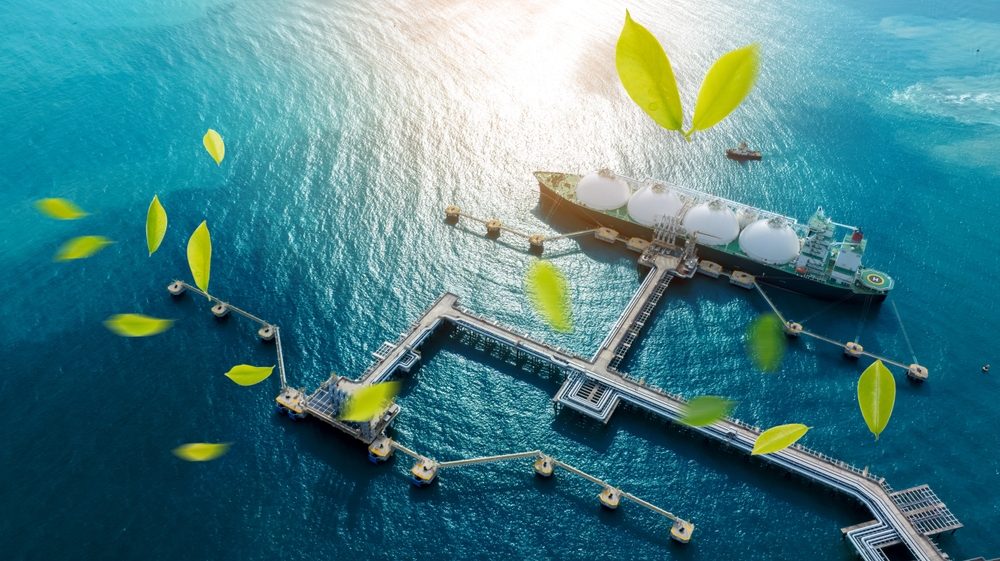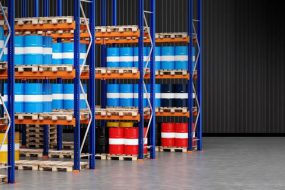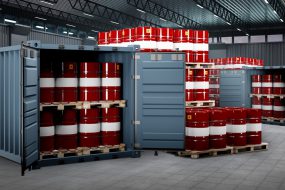

Today’s chemical logistics leaders face mounting pressures. Environmental regulations are stricter than ever, with severe penalties for non-compliance. Additionally, supply chain partners and end customers increasingly demand transparent evidence of sustainable practices. Each shipment carries substantial environmental risks, leaving minimal room for handling and transport errors.
As the chemical logistics industry is projected to reach $362.58 billion by 2028, companies must adopt sustainable transport practices or risk falling behind. The real challenge lies in balancing sustainability and operational efficiency, critical for securing compliance and long-term success in this high-stakes industry.
Let’s break down what’s involved before we get into the potential solutions.
What is chemical logistics?
Chemical logistics involves the meticulous handling and safe movement of chemicals throughout each stage of the supply chain. This process includes comprehensive planning, precise execution, and constant monitoring of the storage and transportation of chemical products to ensure full compliance with stringent safety regulations and environmental standards.
Industries such as pharmaceuticals, cosmetics, and agriculture depend on these practices to deliver their products securely and responsibly. They increasingly use sustainable transport methods to minimise environmental impact while upholding safety and regulatory requirements.
Why reducing environmental impact matters
Implementing sustainable practices isn’t just a trend—it’s essential for long-term business success and environmental responsibility. Here are key reasons why prioritising sustainability is a smart move for your business:
- Regulatory compliance: Managing hazardous materials requires strict adherence to complex regulations, reducing legal risks and ensuring workplace safety.
- Cost efficiency: Sustainable logistics practices, such as minimising fuel consumption and using eco-friendly packaging, lower operational costs and boost efficiency over time.
- Protecting public health: Preventing spills and leaks safeguards nearby communities from potential exposure to harmful substances, emphasising a commitment to public well-being.
- Building trust and loyalty: A genuine concern for environmental impact strengthens your brand’s credibility and fosters lasting customer loyalty.
Related article: Sustainable Transportation: Innovative Solutions for a Greener Future
Key challenges in chemical logistics today
Creating a more sustainable approach to freight transportation in the chemical sector comes with significant challenges. From managing emissions and waste to navigating stringent regulatory requirements, the path to eco-friendly logistics is anything but straightforward. Here are some of the primary hurdles:
Emissions from moving chemicals around
One of the most challenging problems in freight transportation is tackling emissions. Many shipments operate on fossil fuels, emitting greenhouse gases contributing to climate change. In addition, accidental spills during transport can harm people and the environment.
Dealing with waste and by-products
Chemical logistics waste can be tricky to handle. Many of these by-products are hazardous, and no simple disposal options result in a significant environmental burden. With proper waste management strategies, companies can avoid ecological damage and the financial costs of regulatory fines.
Regulatory compliance
Navigating the maze of international regulations is another significant challenge in chemical logistics. Companies must follow stringent standards, often requiring investment in technology and training, which can cause financial strain. Failing to comply can be costly, both in terms of reputation and finances.
Embracing sustainable transport solutions
So, what can be done to make freight transportation in chemical logistics more sustainable? Here are a few key steps that companies are taking.
Using alternative fuels
Switching to alternative fuel sources such as biodiesel, hydrogen fuel cells, compressed natural gas (CNG), or electric trucks can significantly reduce emissions. Thanks to improvements in battery technology, electric and hybrid trucks are effective for short-distance hauls. By reducing reliance on fossil fuels, companies lower their carbon footprint and contribute to cleaner air.
Related article: Why Hydrogen is the Fuel of the Future for Transportation?
Optimising routes for greater efficiency
Route planning plays a significant role in sustainable transport. Using GPS and logistics software, companies can reduce fuel consumption and travel time by mapping out the most efficient paths. Real-time tracking also helps adjust routes to avoid traffic, leading to fewer delays and less fuel consumed.
Modal shifts
Shifting from road to rail or sea freight services can significantly reduce greenhouse gas emissions. Rail and marine options are usually more energy-efficient than trucks, with rail lowering the carbon impact for long hauls. Moreover, this switch eases road traffic, improves air quality, and cuts transport costs—helping companies go greener and save money simultaneously.
Shifting to eco-friendly packaging
Using eco-friendly materials, such as biodegradable or recyclable packaging, significantly reduces waste. Some companies now embrace reusable packaging, which lessens the need for single-use items and appeals to eco-conscious consumers. This shift doesn’t just help the environment; it also demonstrates to customers that the company cares about reducing waste.
What we can learn and best practices
Companies aiming to make a difference in sustainable transport can:
- Set clear goals around sustainability, such as CO₂ reduction targets.
- Invest in renewable resources to reduce reliance on fossil fuels
- Collaborate across value chains. Partnerships are essential for achieving sustainability goals that amplify impact.
- Embrace science and technology to enhance transparency and accountability in sustainability
- Focus on continuous improvement and innovation
Final thoughts
The chemical logistics sector faces significant challenges ahead, but reducing the environmental toll is possible with the right choices. Shifting to alternative fuels, optimising routes, and switching to eco-friendly packaging are some ways companies can lessen their impact. For businesses investing in sustainable transport, the focus should be on continually adopting new practices to remain competitive and demonstrate responsibility to our planet.
Sustainable chemical logistics may seem challenging, but starting is simpler than you think. If your business wants to partner with a greener and more reliable logistics provider near you, consider Aramex as a trusted solution. We balance environmental care with operational quality, meeting your business and sustainability goals.




